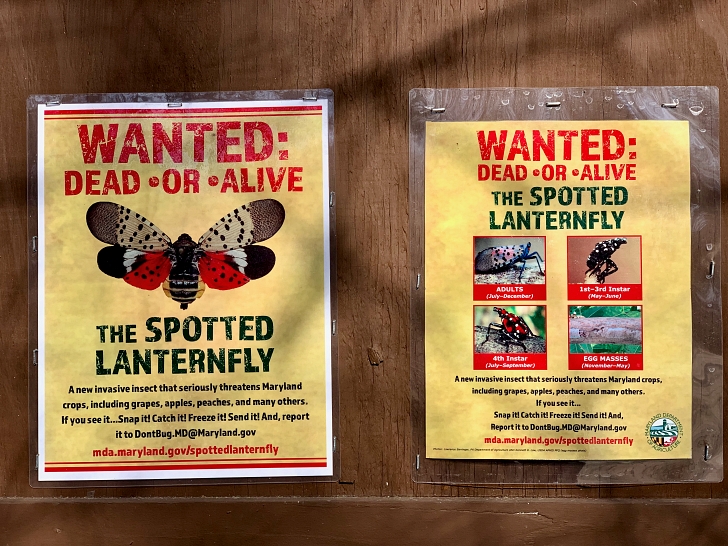We’ve all heard about how invasive species can wreak havoc on local ecosystems. But, there is now a type of bug spreading across the US that is extremely damaging to trees and vines since it feeds on them for its entire life cycle. The flashy insect is quite interesting to look at, even beautiful some might say. But, it’s been decimating fruit vines and trees along the East Coast. What is this creature? It’s the spotted lanternfly.

This colorful bug has a 2 sets of wings in its adult stage, one set of which is a brilliant red color offset with black spots. In resting position this set is usually covered by the semitransparent upper wings, giving them a pinkish hue. However interesting they might look, they have become a pest in several different states in the Eastern part of the US.
The spotted lanternfly has the scientific name of Lycorma delicatula and is native to China, India, and Vietnam. In its native home area natural predators and parasites keep the insects in check. But, in the US those predators don’t exist, leading to huge numbers of the species in certain areas.

L. delicatula feed off tree sap contained in bark and they do so at every stage of their life cycle. These are planthoppers and, even though they have wings, are not great flyers. Given these factors the lanternflies tend to cluster together and can decimate a tree that has become a host to these prolific bugs. They can also cling to vehicles traveling from state to state.
Wherever these insects congregate their droppings do as well. They secrete a lot of excrement, which is sticky and sweet. It’s known as honeydew and brings ants, hornets, and mold to infested areas as they feed off this strange substance. In particular grape vines and fruit orchards are at severe risk when these spotted lanternflies are around. This not only affects the plants on homeowners’ land, but it has been affecting agriculture as well. So far this species of bug has now been found in Pennsylvania, Delaware, New Jersey, New York, Virginia, West Virginia, Maryland, Ohio, and Connecticut.

According to the USDA the spotted lanternfly has no predators at all in the US, meaning they can multiply unhindered.
The spotted lanternflies were first discovered in Pennsylvania in 2014 after a shipment from overseas brought them in. They lay their eggs on smooth surfaces like trees, but can also select stones, shipping containers, and metal structural supports at times. The eggs are laid in fall and overwinter in their original spots until the spring. However you can easily knock them off of their brooding spot and disrupt their lifecycle.

Experts warn that you should take immediate action if you see these pests on your property. Their favorite trees are the Tree of Heaven (Ailanthus altissima) which is itself an invasive species that is now found all over the US. Because this tree is so common now there are fears that the spotted lanternfly will have no problem spreading across the country as well.
Experts recommend removing any A. altissima you may have growing on your property. If you’ve ever been burdened with this tree then you know that’s easier said than done as they are hard to get rid of. The USDA is asking that if you find spotted lanternflies in your area to snap a photo and send it to the appropriate government offices. You can find that list of agency contacts in infiltrated states here.

While some people choose to use sticky band traps that fit around tree trunks, there is now evidence that these traps are hurting native species of insects and birds as the glue is so strong that it can trap animals as big as robins.
Pesticides have shown only mixed successes and catching the insects can be difficult. Stopping them by removing their favorite food source and scraping their eggs off trees and other surfaces are more effective long-term strategies for managing these new pests.
You can find out how these pests are affecting some fruit cultivators in the video below.













